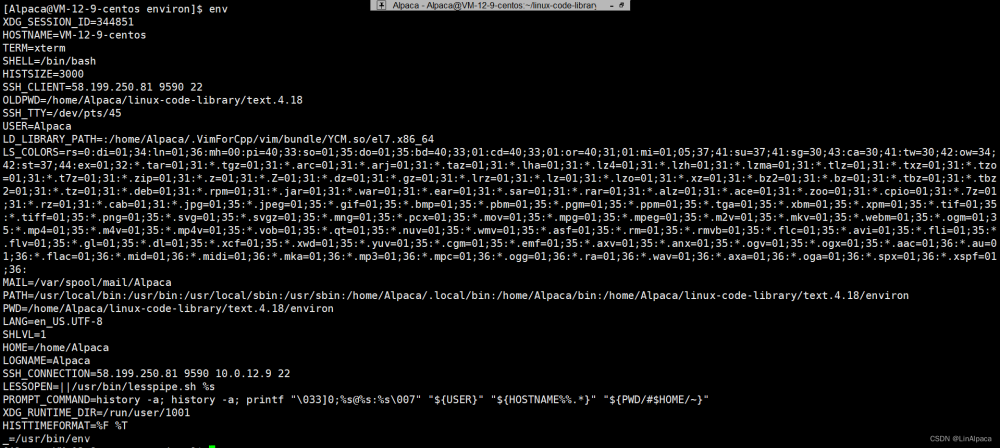在 Linux 系统中,可以使用 pthread_setschedparam 函数来设置线程的优先级。该函数需要传入一个指向 pthread_t 类型的线程 ID,以及一个指向 struct sched_param 类型的结构体对象。struct sched_param 结构体包含了线程的优先级信息。
下面是一个示例代码,用于将线程的优先级设置为最高级别:
#include <pthread.h>
#include <sched.h>
void* thread_func(void* arg) {
// 线程执行的代码
return NULL;
}
int main() {
pthread_t thread_id;
struct sched_param param;
int policy;
// 获取当前调度策略
pthread_getschedparam(pthread_self(), &policy, ¶m);
// 设置优先级
param.sched_priority = sched_get_priority_max(policy);
pthread_setschedparam(thread_id, policy, ¶m);
// 创建线程
pthread_create(&thread_id, NULL, &thread_func, NULL);
// 等待线程执行完毕
pthread_join(thread_id, NULL);
return 0;
}
需要注意的是,只有具有足够特权的用户才能设置线程的优先级。在 Linux 中,只有 root 用户才能设置线程的实时优先级。其他用户只能设置普通优先级。另外,设置线程优先级需要谨慎,不当的设置可能会影响系统的稳定性和响应性。
在 Linux 中还可以使用 pthread_attr_setschedpolicy 函数来设置线程的调度策略,以及使用 pthread_attr_setschedparam 函数来设置线程的优先级。具体的使用方法如下:
#include <pthread.h>
#include <sched.h>
void* thread_func(void* arg) {
// 线程执行的代码
return NULL;
}
int main() {
pthread_t thread_id;
pthread_attr_t attr;
struct sched_param param;
// 初始化线程属性对象
pthread_attr_init(&attr);
// 设置线程的调度策略为 SCHED_FIFO
pthread_attr_setschedpolicy(&attr, SCHED_FIFO);
// 设置线程的优先级为最高级别
param.sched_priority = sched_get_priority_max(SCHED_FIFO);
pthread_attr_setschedparam(&attr, ¶m);
// 创建线程
pthread_create(&thread_id, &attr, &thread_func, NULL);
// 等待线程执行完毕
pthread_join(thread_id, NULL);
return 0;
}
这种方式比较灵活,可以根据需要灵活地设置线程的调度策略和优先级。需要注意的是,如果要使用实时调度策略(如 SCHED_FIFO 和 SCHED_RR),则需要具有足够的特权或者需要将程序编译为实时程序。
以下是一个简单的示例,演示了在 Linux C 中使用多个线程并设置不同优先级的过程。文章来源:https://www.toymoban.com/news/detail-789890.html
#include <stdio.h>
#include <stdlib.h>
#include <pthread.h>
#include <sched.h>
#include <unistd.h>
#define NUM_THREADS 3
void* thread_func(void* arg) {
int thread_id = *((int*)arg);
struct sched_param param;
int policy;
// 获取当前调度策略
pthread_getschedparam(pthread_self(), &policy, ¶m);
printf("Thread %d is running with priority %d\n", thread_id, param.sched_priority);
// 让线程休眠一段时间
usleep(1000000); // 1秒
return NULL;
}
int main() {
pthread_t threads[NUM_THREADS];
int thread_ids[NUM_THREADS] = {1, 2, 3};
for (int i = 0; i < NUM_THREADS; i++) {
pthread_attr_t attr;
struct sched_param param;
// 初始化线程属性对象
pthread_attr_init(&attr);
// 如果是奇数号线程,则设置为最高优先级
if (i % 2 == 0) {
param.sched_priority = sched_get_priority_max(SCHED_FIFO);
pthread_attr_setschedparam(&attr, ¶m);
}
// 创建线程
pthread_create(&threads[i], &attr, &thread_func, &thread_ids[i]);
}
for (int i = 0; i < NUM_THREADS; i++) {
// 等待线程执行完毕
pthread_join(threads[i], NULL);
}
return 0;
}
在这个示例中,我们创建了3个线程,并为其中奇数号线程设置了最高优先级。线程执行的函数会通过 pthread_getschedparam 获取当前的调度参数,并打印出线程的优先级。在程序运行时,你可以观察到设置了最高优先级的线程会先执行,然后才是默认优先级的线程。文章来源地址https://www.toymoban.com/news/detail-789890.html
到了这里,关于linux c多线程优先级的文章就介绍完了。如果您还想了解更多内容,请在右上角搜索TOY模板网以前的文章或继续浏览下面的相关文章,希望大家以后多多支持TOY模板网!














